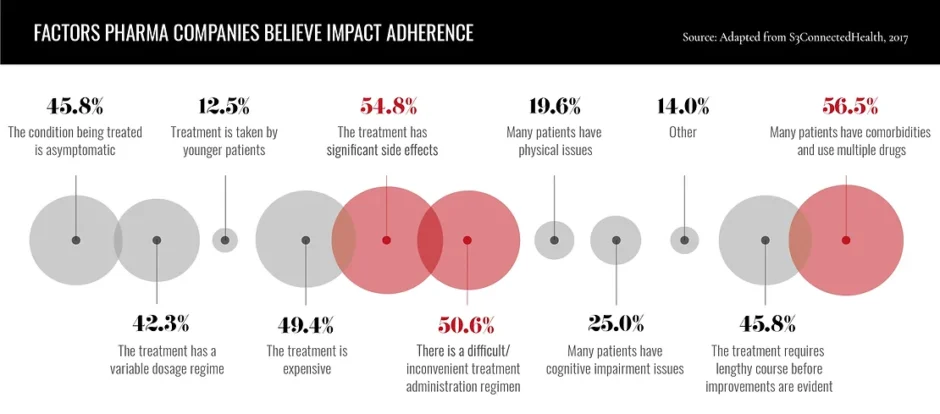Words by Louise Rogers
We could probably make up a whole course of antibiotics from remainders of unfinished treatments we have gathered over the years. So what goes on beyond the doctor’s orders to stop people sticking to their medication regimes?
At the eyeforpharma Patient Summit, London, Pooja Merchant, Head, External Medical Affairs, Bayer Healthcare, is asked to consider what would make her take her medication as a patient. “I am a runner and I thrive on a community, somewhere you can track and share your goals and get encouragement from your fellow members.”
She notes that the answer is not quite so simple. “In the concept of adherence though, data has shown that this doesn’t work all the time. I think it goes down to understanding the individual’s motivations and tailoring it to them.” Insight from Accenture is that in understanding the patient and their needs, as well as recognising the conscious element, getting a deeper understanding of the psychological elements is key – pharma must not forget the changing social context within which patients exist either.
Emma D’Arcy-Sutcliffe, representing both herself as a patient advocate and her daughter, a patient, builds upon this, emphasising the importance of the ABC of engagement: A, awareness of the person’s life and what is important to them; B, behaviour change support; and C, the continuum of care. “The support that my daughter needed at 6 years old is not what she needs at 12 and won’t be what she needs when she is 18”, she remarks.
This sentiment is echoed by Clare Moloney, Programme Insights and Design Lead, IQVIA: “It’s all well and good understanding what someone is going through on Day 1, but we need to understand what is happening on Day 3, Day 60… at some stages it may be emotional support, other times financial. And are we making the most out of all the data and patient insights? As a behavioural scientist, my perspective is that data is only as good as what we do with it.”
Pharma must not forget the changing social context within which patients exist
To understand requires a conversation to take place. D’Arcy-Sutcliffe highlights an overlooked impediment to this: “The key to adherence is the language we use. Patient-adherence to any medication is an essential component, but those words mean nothing to my child, or a patient – so even the words we are using are confusing and alienating. What we are really talking about is encouragement and how we can best help.”
The panel begins to discuss the need for honest and open dialogue between pharma and patients on the implications not adhering to medication can have. “We need to find a different language in what adherence is; we need to switch from talking to patients to people”, adds D’Arcy-Sutcliffe, and with nearly every one of us being a patient at some point in our life, finding this common language seems imperative – otherwise how can we begin to understand patient needs?
Patients are not static and neither are their illnesses, meaning pharma need to be responsive to this dynamic environment. Achieving adherence is not easy, but through developing a new lexicon to enable communication in a common dialogue, pharma can rise to the challenge and uncover what is of true value to the patient along their journey.










